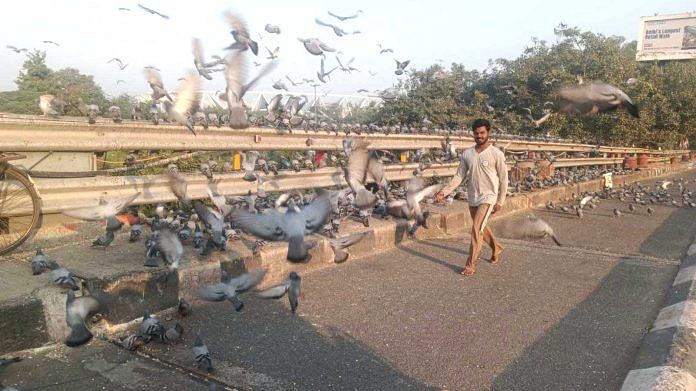New Delhi: Every day without fail, Mahima Chaurasia leaves her South Delhi house at 4 pm sharp, a bag of birdseed in one hand and a steel dolchi in the other. At the Masoodpur Road intersection, she scatters the grains and drops roti scraps on the pavement. This ritual is non-negotiable for her—especially after the one time she skipped it, and her husband ended up in an accident.
“Since that day in 2019, I may not eat myself, but I never miss putting out grains for the pigeons,” 35-year-old Chaurasia said. But whether it’s superstition or simply kindness, routines like hers may soon be considered a civic offence. The Municipal Corporation of Delhi (MCD) is considering a ban on pigeon feeding, blaming these birds’ booming population for health risks to children and the elderly.
Pigeon feeding may be steeped in India’s karma culture, but in Delhi it’s had unintended side effects. The burgeoning population of this invasive species was held partly responsible for driving out sparrows from the city. So much so that former Chief Minister Sheila Dikshit declared the humble house sparrow as the city’s state bird and launched an initiative to save it. A decade later, the impact is visible in the Goraiya Gram forest for sparrows. Now, with the proposed pigeon feeding ban, the MCD is at the centre of a new culture vs public health clash.
Chaurasia, for one, isn’t budging. “I refuse to stop—I believe it brings bad luck,” she said firmly. “We’ve never heard of diseases being linked to it.”
She’s not alone. Delhi is full of pigeon feeding spots—on footpaths, at busy intersections, outside temples, and on rooftops. In Old Delhi, there’s even a Kabutar Bazaar (pigeon market) where pigeons can be bought. Some are even trained for the Mughal-era sport of kabootarbaazi, where birds are released from terraces to ‘race’ to distant points and return within 30 minutes—fodder for many a picturesque Bollywood scene. And for many, feeding pigeons is also a spiritual ritual, a way to earn good karma.
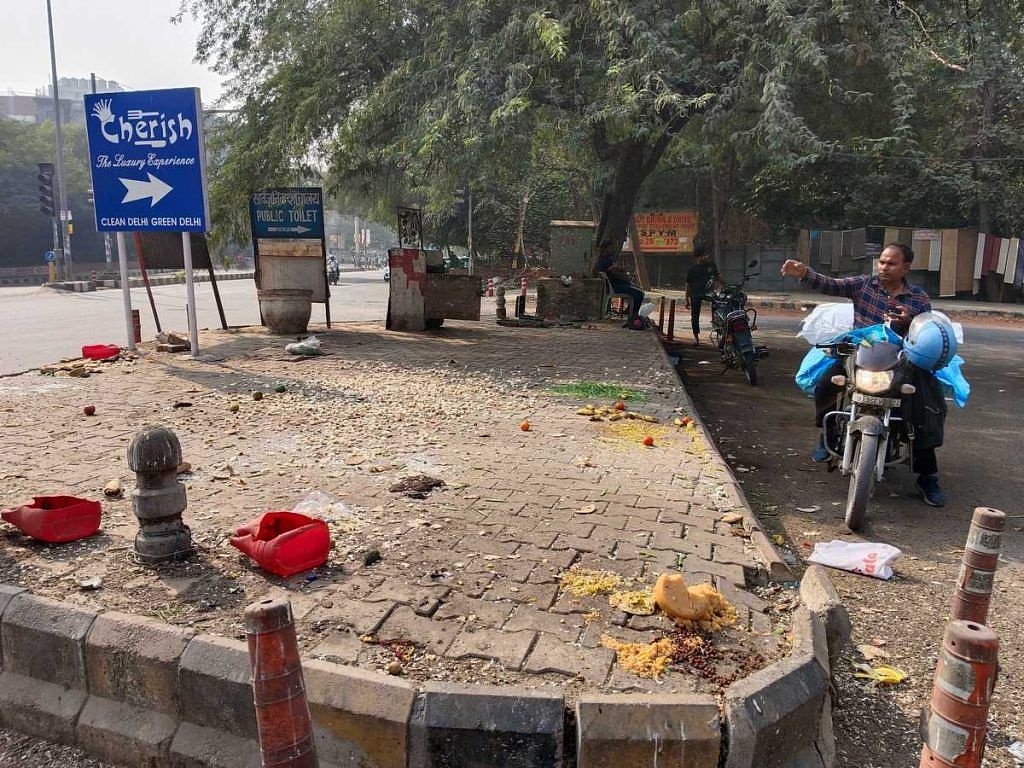
“In India feeding pigeons is not just a habit; it has a religious and cultural significance as well. A ban is unlikely to be effective without public awareness,” said Shreemoyee Chakraborty, director of public policy at the NGO People For Animals (PFA). “Instead of designated spots, people will likely begin feeding them on their terraces or outside their home.”
Thanks to this fondness, pigeons are thriving—a little too much. According to the 2023 State of India’s Birds report, the rock pigeon population in India has has shot up by over 150 per cent since 2000, the steepest increase among any bird species. Conservationists argue that pigeon-feeding spots have contributed to this explosion, creating not only health risks for humans—especially in the form of respiratory issues— but also an existential threat to other birds, like the now-rare sparrow.
“The Municipal Corporation should have proposed this idea much earlier,” said Mohammed Dilawar, founder and president of the Nature Forever Society, a conservation nonprofit dedicated to saving sparrows. “When one species becomes overpopulated, it can profoundly affect other wildlife, as they begin to dominate the ecosystem. This increase in pigeons is not a natural phenomenon; rather, it is a result of human actions, particularly overfeeding.”
ThePrint contacted the MCD for a comment via calls and message. This report will be updated if a response is received.
Also Read: Chandni Chowk had a grand makeover dream. 3 yrs on, vendors, vehicles, and trash take over
Love birds and ‘flying rats’
Bollywood has long had a love affair with pigeons. In Maine Pyar Kiya, Salman Khan uses a white pigeon to deliver love letters. In Dilwale Dulhania Le Jayenge, Shah Rukh Khan feeds pigeons to impress his future father-in-law. And the song Massakali from Delhi-6 celebrates the bird as an emblem of joy.
With such portrayals of compassion and carefree charm, pigeon feeding has become an even more beloved ritual—and a photo-op favourite—in cities like Delhi and Mumbai.

“In Mumbai, pigeon feeding isn’t just a pastime—it’s a commercial operation,” said Dilawar, who also worked on the Royal Society for the Protection of Birds (RSPB) project in 2006. “There are places called kabootar khanas near tourist spots and high-footfall areas, where vendors sell pigeon feeding seeds on a large scale. It’s a system driven by both culture and money—it has grown beyond control.”
But off-screen, the reality is far less charming.
Often referred to as “flying rats”, pigeons are linked to a host of diseases—especially in densely populated urban areas. Their droppings build up over time, eventually breaking down into fine particles that become airborne and can cause respiratory issues when inhaled. In cities like Delhi, where air quality is already poor, this is a major concern.
“Pigeon droppings pose significant health risks, especially in urban areas where they can accumulate. They can harbor pathogens like histoplasma and cryptococcus, leading to serious respiratory infections,” said Dr Inder Mohan Chugh, senior director of pulmonology at Max Super Specialty Hospital, Shalimar Bagh.
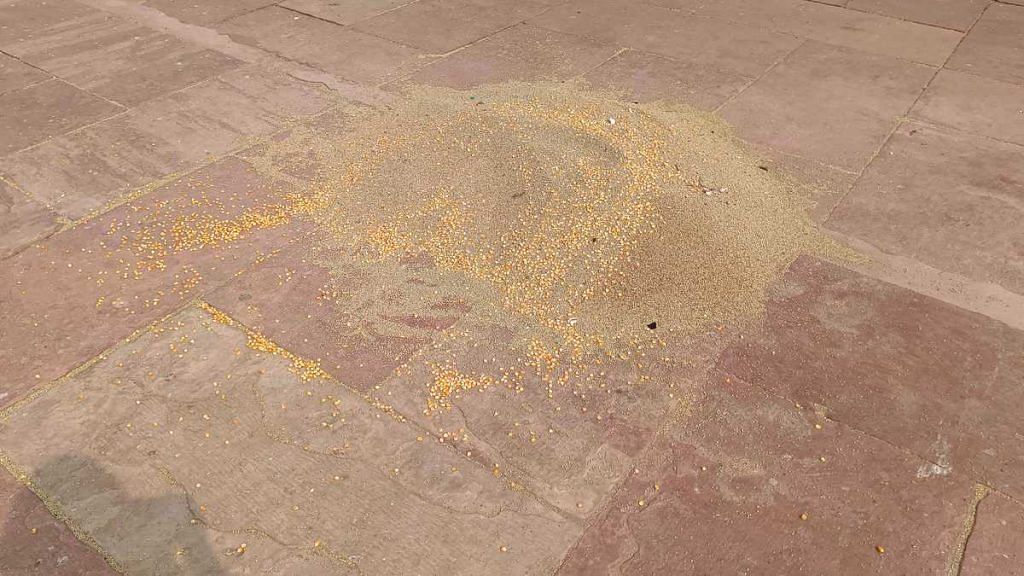
One illness on the rise is bird breeder’s lung, or hypersensitivity pneumonitis—a condition that many patients don’t realise is linked to pigeons.
“Patients come to us in advanced stages of hypersensitivity pneumonitis,” said Dr Chugh. “Repeated questions reveal exposure to pigeon droppings and feathers, as well as feeding pigeons.”
And the health risks don’t stop there. Dr Chugh said pigeons can also spread infections like psittacosis, which causes flu-like symptoms, and salmonella, which can lead to gastrointestinal illness. They even carry parasites that can infect humans.
Even for those who don’t actively feed pigeons, their hazardous droppings are hard to avoid. As Dilawar pointed out, pigeons find “perfect nesting spots” on window ledges and AC units, turning many balconies into pigeon toilets.
Dr Chugh advised taking precautions when cleaning up pigeon droppings.
“Wet the droppings first to prevent airborne particles—and always wear gloves, masks, and goggles,” he said.
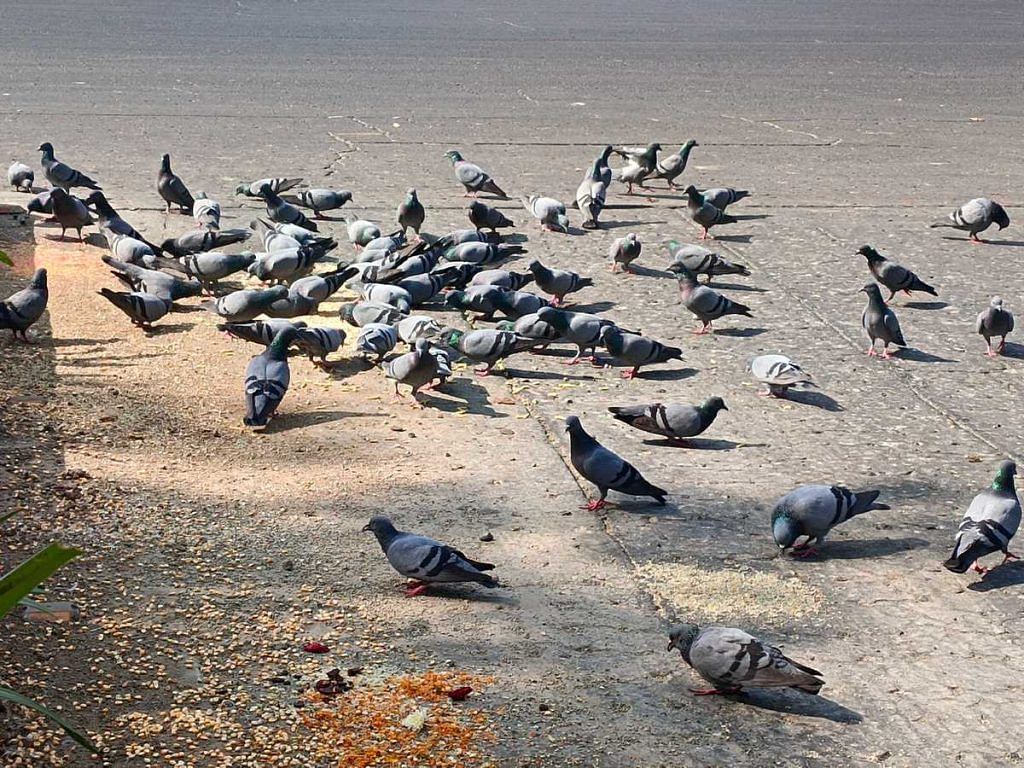
‘Not going to stop feeding pigeons’
For many in Delhi, feeding pigeons is a sacred ritual—and they say they are not about to stop.
Just like Mahima Chaurasia, 50-year-old auto driver Chetan Pal is irate at the mere prospect of changing his daily routine.
“In Hinduism, ann daan (feeding) is considered one of the greatest forms of charity. Feeding grains to pigeons is a virtuous act, and it’s something I have always done,” he said. “We have been doing this since childhood and we have not contracted any diseases. It’s not right to stop feeding pigeons. They are dependent on humans for their food.”
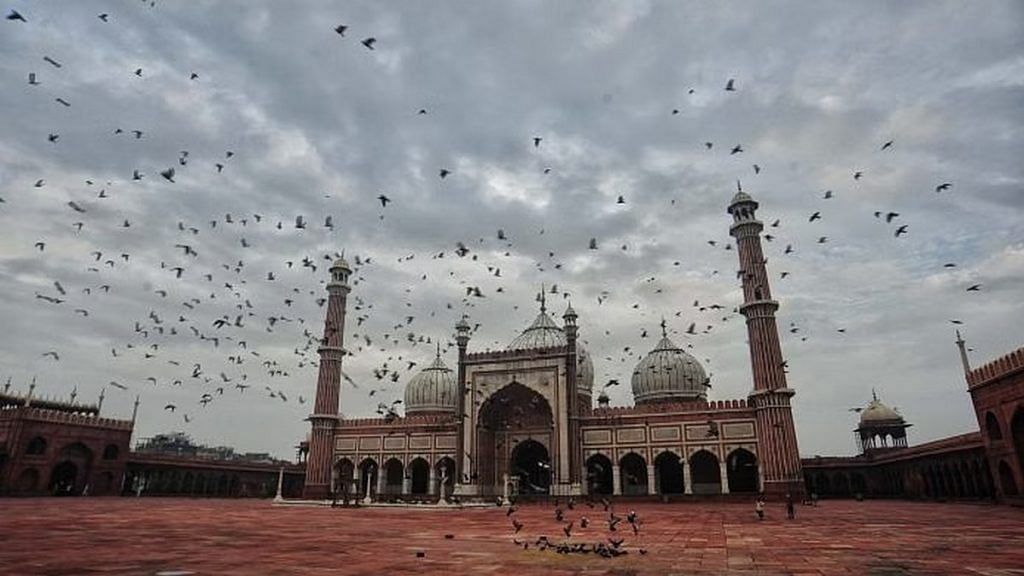
Every morning, before he picks up his first passenger, he stops on the Jawaharlal Nehru Flyover, takes a bag of wheat from his rickshaw, and scatters it in a corner, where a large flock of pigeons gathers. To Pal, this is his morning puja.
Scenes like this play out all over Delhi. Near Mandi House Metro Station, a large flock spiralled into the sky at the sound of vehicles, only to settle back down to peck at their breakfast spread. At Jama Masjid, one of Delhi’s largest pigeon-feeding spots, piles of birdseed attract thousands of pigeons. This sight has become a tourist attraction, drawing people from far and wide who come to watch, take photos, and toss grains to the plump birds.
Also Read: No burqa, no men to be wary of—Daryaganj’s Parda Bagh brings women out to laugh, talk, play
Bans to bludgeoning to balance
While some welcome a ban on pigeon feeding, others argue that a more measured approach is needed.
One of those in favour of tighter restrictions is ecologist and author Sohail Madan, who sees pigeon feeding as part of a broader problem— the tendency to feed urban wildlife in ways that throw nature off balance.
“By feeding wildlife, whether it’s animals or birds, we not only destroy their natural habitats but also make them dependent on humans. For example, when people started feeding monkeys in certain areas, the monkeys began entering homes in search of the same food,” Madan said. “People should support whatever proposal the MCD puts forward and be aware of the health hazards pigeons bring.”
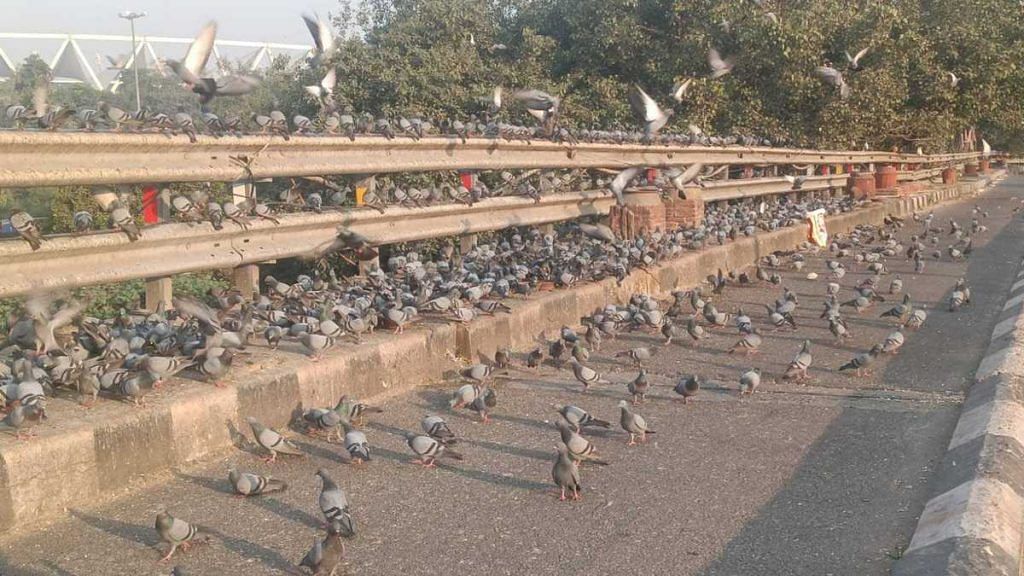
The growing pigeon population is not just a Delhi problem. Cities around the world have faced similar struggles and tried everything from fines to outright culls—and it’s been divisive elsewhere too.
In June, for instance, there was an “uproar” among animal rights activists when a German town called Limburg an der Lahn voted to wipe out its entire pigeon population over the next two years—specifically by bludgeoning them and breaking their necks. Other jurisdictions have been a little less heavy-handed in dealing with their pigeon problems. In San Francisco, feeding pigeons on streets, sidewalks, and in parks is illegal. Singapore imposes fines as high as S$10,000 for the same offence, and Toronto has implemented both a bylaw against feeding wildlife and birth control in pigeon food to control the population.
Closer home, the Pune Municipal Corporation began fining citizens Rs 500 for feeding pigeons in public places, following a Bombay High Court order in March 2023. Yet despite such measures, many people can’t seem to resist offering a meal to the persistent birds.
For conservationist Chakraborty, though, prohibitions and punishments aren’t the answer—it’s about public awareness and finding a middle ground.
“Only banning feeding will not yield a positive solution,” she said. “Our city is plagued by garbage dumps, and since pigeons are opportunistic eaters, they will eat whatever they can find—whether it’s food from humans or waste from the streets.”
Instead, Chakraborty suggests that the MCD should focus on improving sanitation and setting up designated feeding areas.
“Designated feeding areas and dovecotes should be created, allowing pigeons to be trained to stay there. These areas need to be regularly cleaned. Additionally, removing eggs and replacing them with dummy eggs and sterilising male pigeons is essential,” Chakraborty said. “This is the only humane and effective way to manage the pigeon population.”
(Edited by Asavari Singh)



